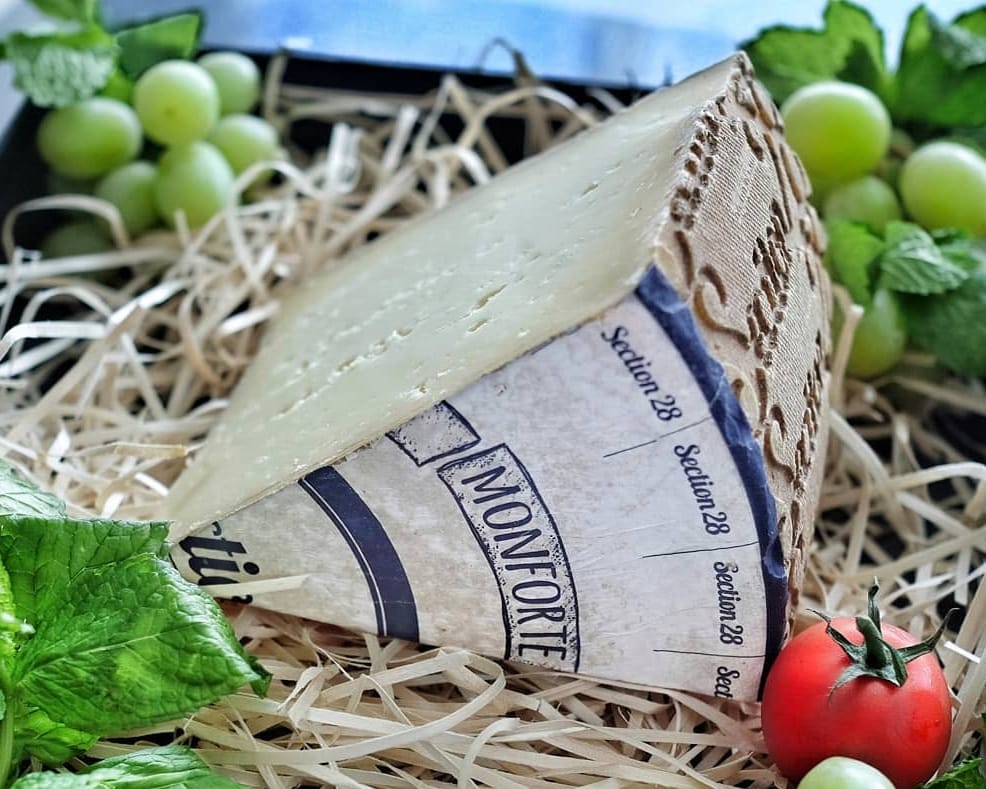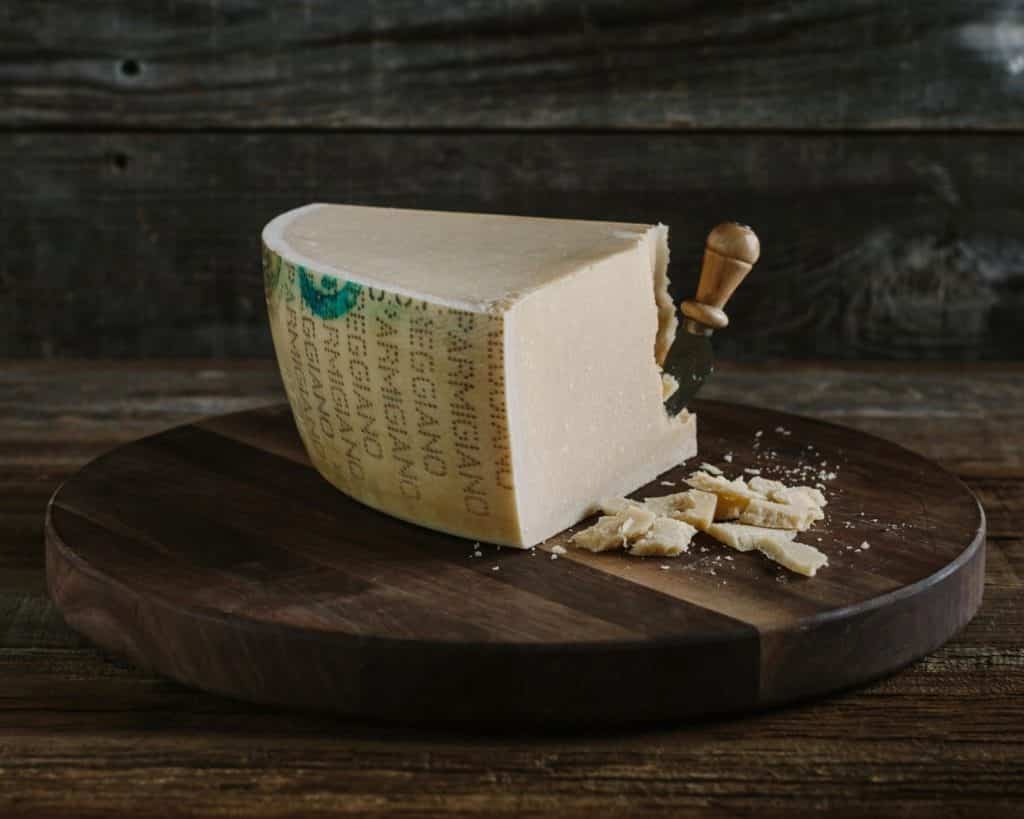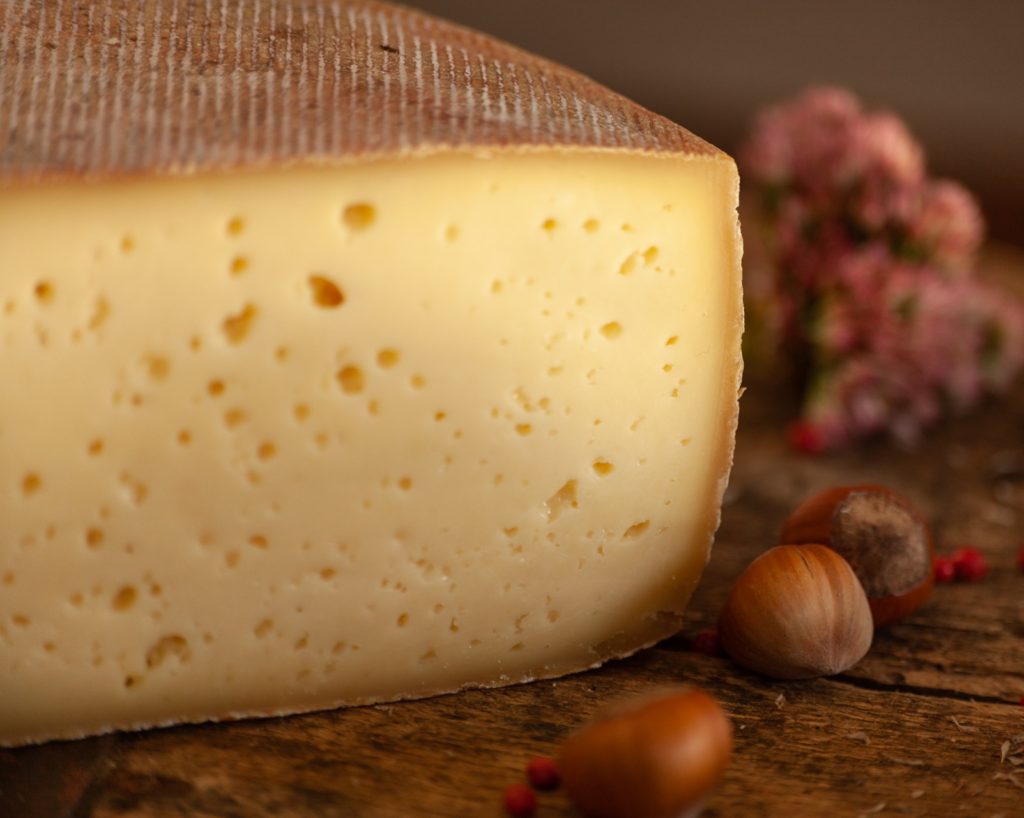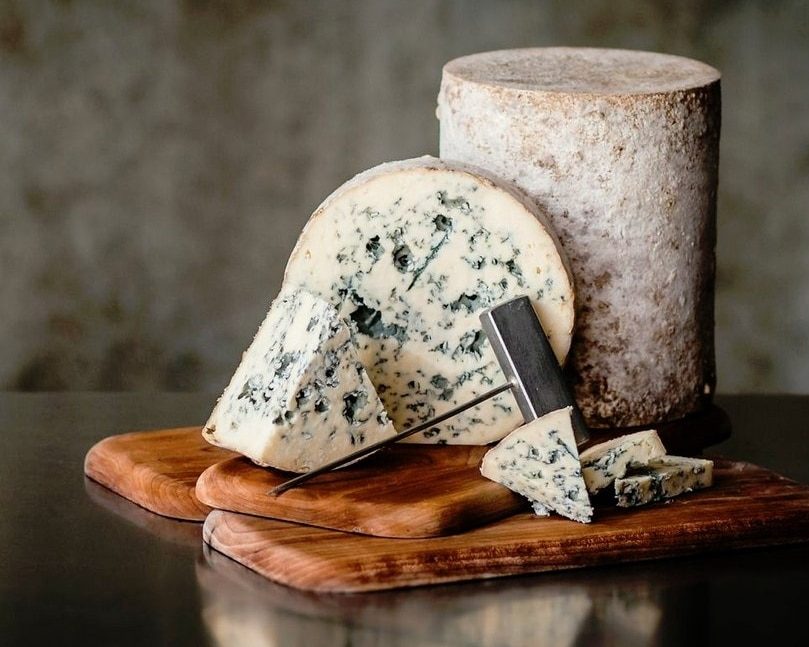Shave Tête de Moine using a girolle and you will have cheese flowers you can eat
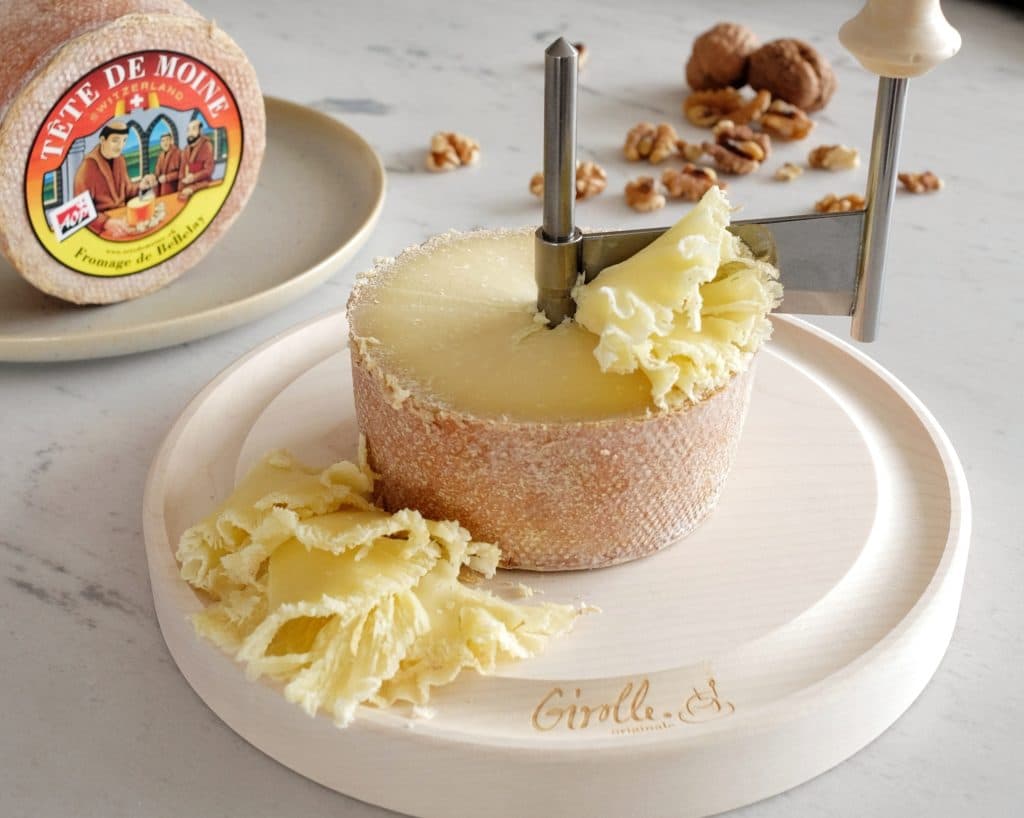
Where Tête de Moine comes from
Tête de Moine is a semi-hard cheese made in the Bernese Jura Mountains of Switzerland. Its origins date back to the 14th century and the picturesque Bellelay Abbey in Saicourt.
In the beginning, the local monks made this cheese using local cow’s milk as a means to pay the local council for their rent at the abbey. Over the last 800 years, the recipe has largely remained untouched. However, it is now made on a much larger scale and exported to over 40 countries around the world.
Protected by the AOP
The AOP awarded Tête de Moine a stamp in 2001 in a bid to protect its origins and unique production techniques. Furthermore, the AOP dictates that the dairies can only use raw cow’s milk that is freshly delivered daily from the farm.
Firstly, the cheesemaker adds cultures and rennet to transform the milk into curd. Afterwards, they cut the curd and gently heat it before transferring into cylindrical moulds to be pressed.
How Tête de Moine is matured
Thereafter, they move the wheels to a cellar to mature for a minimum of 2 months. During this time, an affineur regularly brushes the wheels with a salt and water mixture.
The end product is a semi-hard cheese with a rusty red natural rind. Its aroma is quite pungent, specially when the top of the rind is cut.On the palate, this cheese is nutty, fruity and aromatic.
How to serve Tête de Moine
This unique cheese is best enjoyed shaved. You can do this using a sharp knife or you can used a Girolle. This ingenious cutter which has been specially designed for this purpose. Watch the video above for a demonstration.
Wash it all down with a glass of Sauvignon Blanc, Chardonnay or a Cider.
Thank you for reading
Thank you for reading this post about yet another amazing artisanal cheese. Have you tried this cheese before? Drop us a comment below with your thoughts.
If you enjoy learning about new cheeses, you can subscribe to our newsletter below. You will hear from us about once a week as we share new cheese profiles with you.
Finally, keep scrolling to find some more cheeses and recipes that have been recommended for you. Keep it cheesy!
